Are you longing to add some vibrant greenery to your aquarium but worried about your voracious goldfish devouring everything in sight? Fear not! There are indeed live plants that can thrive in a goldfish habitat without becoming fish food. In this comprehensive guide, we’ll explore eight fantastic plant options that can coexist harmoniously with your aquatic companions. With the right selection of plants and a few tricks up your sleeve, you can create a stunning underwater oasis that both you and your goldfish will enjoy.

Fortunately, I’m here to tell you that there are certain live plants suitable for goldfish habitats and I’ve done some research to give you some ideas.
Being an opportunistic omnivore, the goldfish will typically try to eat most vegetation it comes across in its tank or pond.
However, the aquatic plants that I’m about to list below consist of species that either:
- grow too fast for your fish to make a difference;
- are generally unappetizing for omnivorous fish.
Quick Sidenote: Do you want to watch this article instead of reading it? Checkout the highlight video below from our YouTube Channel (Or read the more detailed article below), be sure to Subscribe For More Great Fishkeeping Content:
That being said, let me show you the eight best plants for goldfish and how to make sure they won’t get eaten or uprooted.
8 Live Aquatic Plants for Your Goldfish Aquariums
During my research for this post I made sure to only list plants that have worked for the large majority of aquarists I know or me personally.
Goldfish have an enormous appetite for plants and some people even use these fish as algae eaters in their outdoor pond.
On the other hand, each specimen will likely develop its own taste to a degree and this is especially true for omnivores. This means that what has worked for me may not work in your tank, for example.
Because I want to make sure that your planted tank will work out, I am listing a couple of tricks right after the plant selection.
To greatly improve your odds of success you should likely skim through them and at least try to follow them.
That being said, have a look at a good selection of plants for a goldfish habitat:
1. Red Tiger Lotus- Nymphaea zenkeri

The Red Tiger Lotus seems to be one of the best live plants for goldfish tanks because the fish rarely find it appetizing. Another advantage of having this aquatic plant around omnivorous fish is that it has an incredible growth rate.
The Red Tiger Lotus belongs to the Nymphaea genus and frankly, it is a very hardy aquatic plant.
When I first experimented with the Red Tiger Lotus it was not in relation to keeping plants in a goldfish tank.
It was actually that I wanted to give water lilies a try because I wanted to see if mine could sprout a flower from my aquarium’s surface. Plus it’s one of the few naturally red aquarium plants suitable for beginners.
The Red Tiger Lotus seemed like an excellent choice for me due to its beautiful red leaves and relatively easy care as I was relatively new to planted tanks back then.
Author’s note: Basically this plant is a water lily that has been pruned in a way that restricted it from reaching the water’s surface. If you do leave yours to reach it you can actually see it flower like this:

Anyway, after some time it just so happened that I put a Tiger Lotus in my aquarium with goldfish.
The plant had a hefty bulb that didn’t need to be completely buried in the substrate and it also grew super fast.
My logic was that my goldfish would not be able to uproot it easily and even if they did try to snack on it, the Red Tiger Lotus would just grow too fast to care.
As it turns out, my goldfish were not even interested in this plant.
I asked around in my fish-keeping community and that seemed to be the case with most people who have tried it for their goldfish aquariums.
Of course, some users were noticing a bit of nibbling, but it did not really matter as the plant grew too fast.
It is still kind of surreal to me that such a fun plant to have is actually goldfish-safe.
- Suitable for Beginners: Yes
- Lighting Required: Moderate
- Expected Growth Rate: Fast
- Care Tip: Dose additional Iron and increase lighting for a more pronounced red color
2. Java Fern – Microsorum pteropus
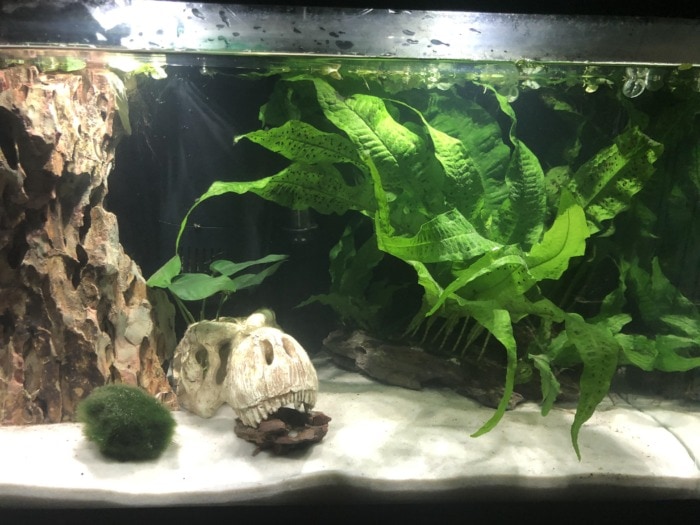
Typically, Java Fern is one of the plants that is almost fool-proof around goldfish. Its robust leaves are rarely a preferred meal by this fish.
I’ve found that Microsorum pteropus is the equivalent of “playing it safe” if you want a planted goldfish aquarium or bowl.
My experience with this plant shows that it will stay mostly intact even if the fish are trying to mess with it at first.
Goldfish rarely find it delicious.
Тhis plant has neither seeds nor flowers, and it belongs to a genus of ferns named Microsorum.
Anyhow, Java Fern has another advantage in this situation – it does not need to be buried in the substrate.
Personally, I glued the plant to a piece of driftwood for a more natural look in my goldfish tank.
That’s because Java Fern sends rhizomes instead of roots, which are root-like stems that need to remain above the ground.
Gluing the plant to rocks or driftwood helps with it not being thrown around by neurotic goldfish.
In that regard, Java Fern also helps to stay more flexible with your tank’s aquascape ideas.
Author’s note: Because I know you’re already asking yourself – I used Cyanoacrylate as glue because I’ve found it to be aquarium-safe.
Anyway, my goldfish nibble at the Java Fern from time to time, but I think that it only happens when they’re stressed, like right after a large water change. The plant itself remains very resilient and manages to thrive despite the occasional harassment from my fish.
Anyhow, if this plant intrigues you I have some pointers as to how you could best take care of it, which you can find by clicking here.
- Suitable for Beginners: Yes
- Lighting Required: Low
- Expected Growth Rate: Slow to moderate
- Care Tip: Java Fern enjoys highly oxygenated waters, so use a water stone in your tank
3. Temple Plant – Hygrophila corymbosa

Hygrophila corymbosa is a good addition to any aquarium if it’s heavily covering the background of the tank. It’s a fast grower that has thick leaves and generally doesn’t get eaten by goldfish.
When reading up on the Temple Plant I was pleased to find that it is beginner-friendly.
I’ve since used it multiple times in my planted tank projects, but never with goldfish.
However, I did some deep digging and managed to find some interesting fish keeper reports about it.
Most aquarists who actually owned the plant and spoke from personal experience seemed to agree that their goldfishes were uninterested in eating it.
I’ve also seen a mature tank with a lot of Hygrophila and fancy goldfish.
All of this is more than welcome to the goldfish owner since the Temple Plant has a very cool look, and can really improve the aesthetics of a fish tank.
I recommend that you plant large quantities of it and create a “bush” feeling to it.
Author’s note: The Temple Plant is actually more famous by its Latin name – Hygrophila corymbosa. It comes from the Hygrophila genus which includes a wide variety of species and it’s more popular as swampweeds. Moreover, you should know that there are multiple varieties of the corymbosa species, which was kind of confusing to me at first.
When I was initially researching this plant I was convinced I was going crazy.
Seemingly different plants were all called with the same Latin name.
The one in the photo you see here above, for example, is my favorite and is called Hygrophila corymbosa “Siamensis”.
Other Hygrophila corymbosa varieties you could check out are:
- Stricta
- Thailand
- Compact
- Angustifolia
Anyhow, try the Temple Plant in your goldfish aquarium if you want to achieve that bushy jungle look.
- Suitable for Beginners: Yes
- Lighting Required: Low to moderate
- Expected Growth Rate: Moderate to fast
- Care Tip: This plant is very dependent on Potassium. So much so that I would recommend dosing a standalone K fertilizer
4. Jungle Val – Vallisneria americana
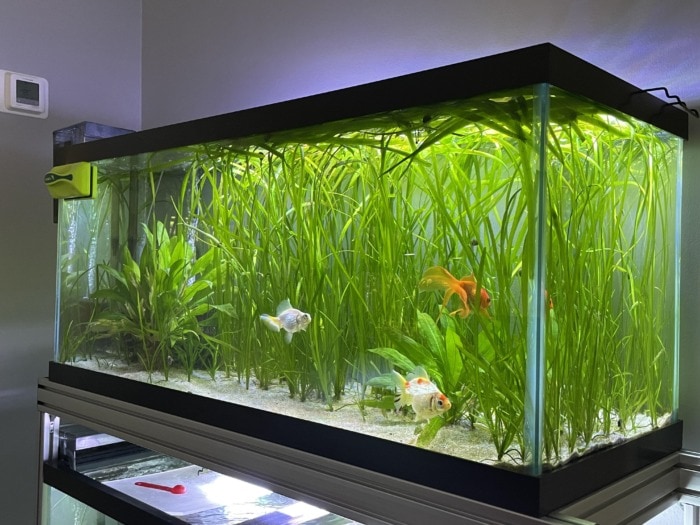
Jungle Val is possibly one of the best plants to put in with goldfish. This oxygenating plant likes the high amounts of Nitrate that goldfish produce and its leaves are typically left alone.
The Jungle Val was the first plant I managed to keep alive for more than a couple of weeks with my goldfish around it.
It can look very basic to some, but you’ll grow to love it once you’ve had it in your tank.
The Jungle Val, too good to miss in my opinion, is a member of the genus named Vallisneria.
The goldfish I’ve raised and seen never ate Jungle Vallisneria, but some users do report that it happens from time to time.
The good news is that once established this plant will grow like wildfire in your aquarium.
From my experience, it starts a little slow and suddenly it goes nuts and overruns everything.
Be mentally prepared to occasionally trim your Jungle Vals if your goldfish don’t seem interested in controlling its growth.
- Suitable for Beginners: Yes
- Lighting Required: Any, but I recommend moderate levels
- Expected Growth Rate: Depends on lighting but usually very fast
- Care Tip: It’s normal to see your Jungle Val melt when it’s first introduced to the tank – it will bounce back soon enough; Likes gentle flow
5. Mexican Oak Leaf – Shinnersia rivularis

The Mexican Oak Leaf is a fast-growing stem plant that doesn’t require much care in the aquarium. Goldfish don’t seem to like eating the plant’s fleshy leaves or stem.
The Mexican Oak Leaf is somewhat popular for growing extremely fast.
An inch or two a day is actually a normal growth rate for this plant. Fast-growing plants are ideal for goldfish tanks because they suck up a lot of the excess Nitrate from the water.
But this is not the reason I’m listing it here.
This is a plant from the Shinnersia genus that will grab your attention for sure.
It’s just that each goldfish owner I see using this plant reports the same thing:
Their fish leave the Mexican Oak Leaf alone.
It’s not known whether it’s the fleshiness of the leaves or their taste that goldfish find unappealing. But whatever it is, it seems to work without fail.
In fact, I haven’t heard of anyone sharing a story where their goldfish would try to eat Shinnersia rivularis.
Anyway, the plant itself is not demanding at all, and it can be used in both aquariums and outdoor ponds.
On top of that, the Mexican Oak Leaf has leaves with a rather unusual shape, which can contribute to a more exotic aquascape.
- Suitable for Beginners: Yes
- Lighting Required: Low to moderate but it will grow under any
- Expected Growth Rate: Extremely fast
- Care Tip: None – you probably can’t kill this plant
6. Anacharis – Egeria densa

The Anacharis will likely get picked at by goldfish but it will keep their attention away from your other plants. Also, this plant grows so fast that your fish won’t be able to make a dent in its overall plant mass. Because of its good oxygenating abilities the Anacharis is also a popular plant for Goldfish ponds.
Anyway, I’ve found Anacharis to be the secret ingredient to a successful goldfish tank.
To some, this may be counterintuitive because it’s well known that goldfish will munch on this plant.
However, the growth rate of Anacharis makes it the perfect self-replenishable goldfish snack.
In my planted tank projects I strategically place a stem or two and leave them for the fish to pick at.
While my goldfish are busy with the Anacharis my other plants take off nicely.
You can spread the damage by placing the Anacharis in opposite corners of the tank.
You can also plant one larger stem in any corner, but I’ve found that multiple stems work better.
Anyway, the Anacharis also does well when floated because it does not need to be rooted in the substrate to thrive.
This means that even if your goldfish manages to uproot the plant you should not stress about immediately replanting it as with other root feeders.
Author’s note: I’ve actually mentioned Anacharis in my article on the best floating aquarium plants. Each of these can be a fantastic addition to a goldfish tank. I recommend checking out the Giant Duckweed.
Anyhow, one final thing I’d like to mention about this magnificent oxygenating plant is the general confusion around its Latin name.
Typically, you will come across Anacharis as Elodea because that’s how the plant was classified in the past.
Though very similar to the rest of the Elodea species, it was eventually decided that what aquarists refer to as Anacharis should be in its own separate category.
The correct way to refer to Anacharis is Egeria densa, and as a its name suggests it comes from the Egeria genus.
However, you’ll find that the name Elodea stuck with the aquarium hobby.
- Suitable for Beginners: Yes
- Lighting Required: Low to moderate
- Expected Growth Rate: Fast
- Care Tip: You can leave it floating
7. Octopus plant – Pogostemon Stellatus
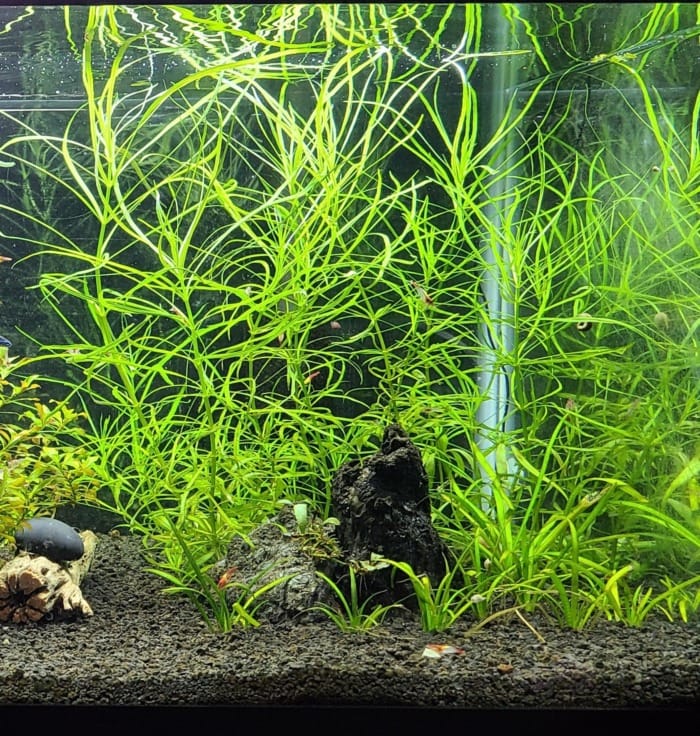
If you’ve ever held Pogostemon Stellatus “Octopus” in your hands you’d know that it feels like plastic.
This outstanding plant is from the large genus known as Pogostemon.
This may be the reason why, typically, goldfish don’t bother the Octopus plant and if they do the damage is minor.
The tricky part here is that this plant requires moderate lighting and some fertilizers.
Injecting CO2 into the mix does help as well.
However, it’s rare to see a goldfish tank that has all of those.
Having a trusty CO2regulator, a good set of lighting fixtures and some well-researched selection of aquarium fertilizers basically amounts to a “high tech” planted tank. A high-tech planted tank is not something you start as a beginner in the hobby unless you’re very ambitious in nature.
So if you’re going to grow the Octopus plant in your goldfish aquarium you should make it a dedicated planted setup, in my experience.
If you’re someone who wants a low-maintenance setup then I’d say that the Octopus plant may not be for you.
Anyway, the higher demand for Carbon Dioxide and light makes this plant a perfect addition to a goldfish pond.
Leave it floating so that the plant can freely suck up CO2 and the sun will do the rest.
Author’s note: I should point out that there are reports of people who can’t control how fast this aquatic plant grows and others who struggle to get it going. This may be because Pogostemon Stellatus is very widely distributed across the world and different sub-varieties adapt to different conditions. Following my advice from above will guarantee you that yours will have a decent growth rate.
Anyway, once this plant has all of the right conditions it will grow like crazy and your goldfish won’t be able to do anything about it.
Or at least they won’t want to, it seems.
I’ve seen tanks in which the goldfish would eat anything but the Octopus plant.
- Suitable for Beginners: No
- Lighting Required: Moderate to high, slows growth in low-light setups
- Expected Growth Rate: Fast when everything is right
- Care Tip: Dose with a standalone Iron supplement and make sure the tank maintains a good amount of Nitrate in the water
8. Anubias – Anubias Barteri

Anubias are generally one of the easiest plants you can take care of, and Anubias Barteri is not an exception.
This hardy plant can be grown without any CO2 injections and it’s not fussy about light either.
Unlike most wide-spread Anubias, Barteri is a fairly large plant that can grow up to 16 inches in height (40 cm).
It develops hard, fleshy leaves that protect it from being eaten by goldfish or other equally vicious aquarium fish.
Since it’s a rhizome plant, it doesn’t need to be planted in the substrate and can be attached to a hard surface such as a rock or a piece of wood.
You can also use super glue to attach it to one of the aquarium’s surfaces.
- Suitable for Beginners: Yes
- Lighting Required: Low to moderate
- Expected Growth Rate: Slow
- Care Tip: You can plant it along with its suction cups, since it grows really slow.
6 Tricks to Prevent Goldfish From Eating The Plants in Your Tank
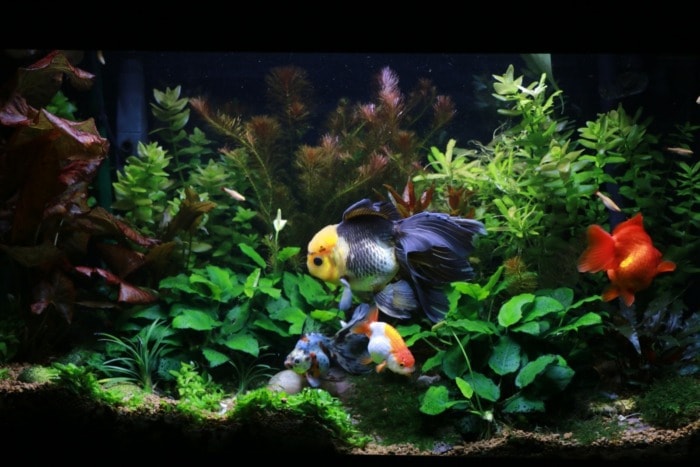
Here are a couple of quick hacks to improve the odds of succeeding with your new planted goldfish tank:
- Feed your goldfish duckweed on the side. Duckweed is a very fast-growing floating plant and goldfish absolutely destroy it. I recommend using a floating plant ring and feeding your goldies some duckweed so they don’t pay attention to plants on the bottom.
- Provide an “all-time” veggie in the tank. Let your goldfish munch on some lettuce or peas in between feeding time. Same concept as with the duckweed.
- Plant more than one plant at once. Don’t just plant one plant, but rather 5 and place them in different tank areas. This would initially confuse you goldfish with too much choice, giving the majority of the new plants a chance to get going. Also, plant a lot of plants overall as it spreads the grazing and helps the plants survive. Here’s a comparison between a lightly planted tank and a heavily planted one (aim for the latter):

Lightly Planted vs Heavily Planted Aquariums – Images by buttonscrubber & tarantinostoes
In my experience, this method has been a game-changer in my success with planted goldfish aquariums.
- Have tactical Anacharis placements. Combine this method with the previous one and you’re likely set for success. Read more in my entry about Anacharis.
- Use aquarium planters. An aquarium planter is basically an underwater vase. Sometimes goldfish are not interested in eating your plants and just want to violently uproot them. In this case, the aquarium planter can protect the plant and its roots from damage. The planters are also pretty stylish – here, check how one looks on Amazon.
- Have fake plants in the mix. Or have all of your tank’s bottom covered with fake plants. They don’t look as good but a careful selection can still make your aquarium look attractive. One strategy to mention here would be to “train” your goldfish by showing them that fake plants are not delicious. When they get used to the idea you could gradually (or all at once) introduce live plants to the mix.
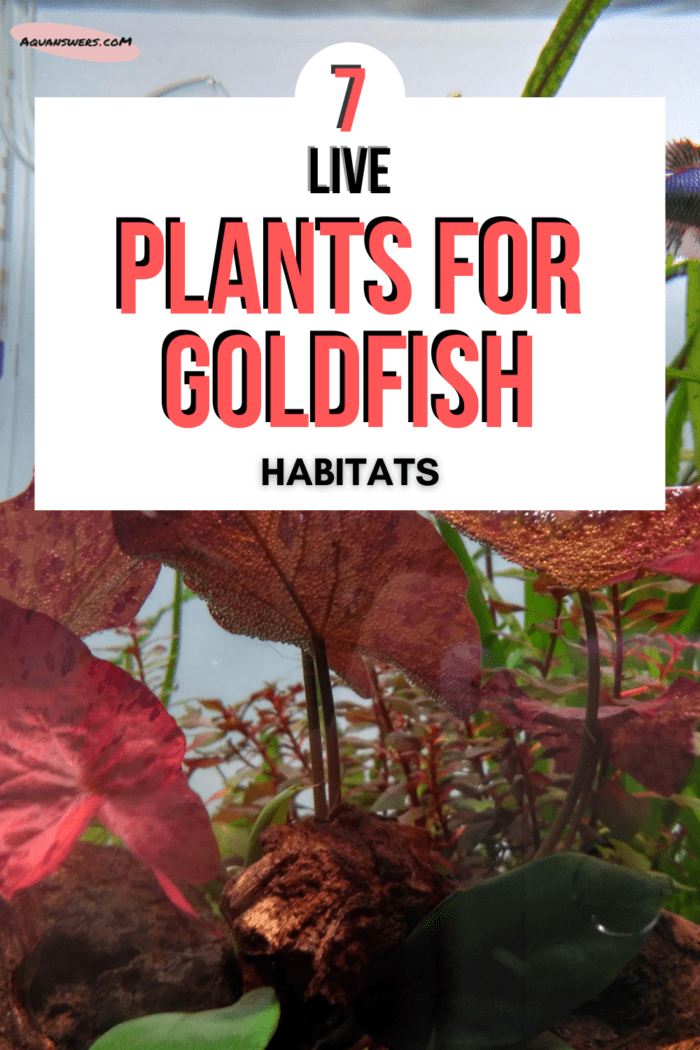


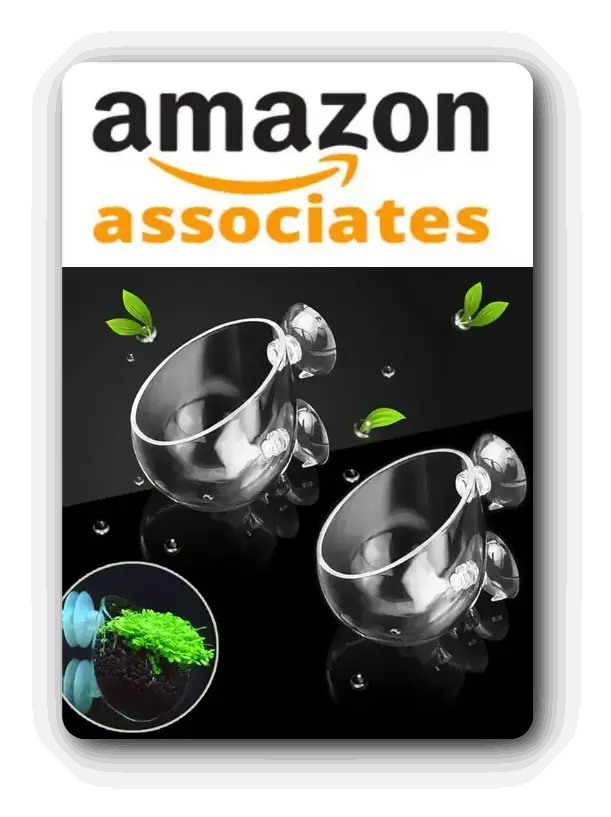
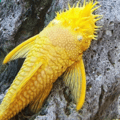



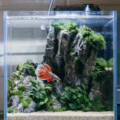

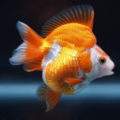
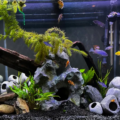

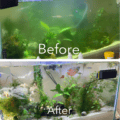
Thanks so much for sharing all this info, I am just thinking about getting a goldfish aquarium again, had some many years ago and would start over and love the idea of many plants. Xo from Italy
I actually just placed some Anacharis in my tank as a food supplement for my small fantail; (Note: He knew just what to do with it!) Question: Once he presumably consumes all leaves from a given stem, should said “bare” stem be removed or will it re-sprout new foliage over time?
Thx! (great article!)
-MB
Hello,
As long as the stem looks green the leaves should grow back but slowly. However, the stem itself should continue growing and aquickly sprout fresh leaves from the new part of the stem. It’s really best to have a couple of stacks of Anacharis throughout the tank to mitigate damage.
Hope this helps, and thanks for the kind words on my article!
Momchil